March 5, 2023:
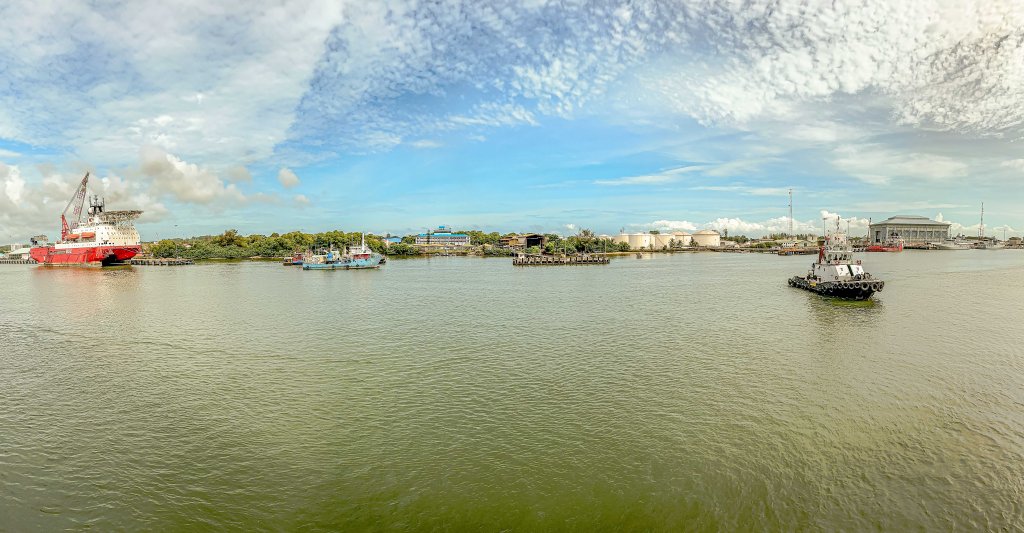
After two days at sea, we made port on the island of Borneo, and docked at the port of Muara in Brunei. Brunei is an absolute monarchy located on the north coast of Borneo between the Malaysian provinces of Sarawak on the west, and Sabah on the east. Its coast is on the South China Sea. The whole southwestern part of the island is a province of Indonesia.





The formal name of the kingdom is Brunei Darussalem, or Brunei, the Abode of Peace. It has a total population of about 460,000, and about 100,000 of those live in the capital city of Bandar Seri Begawan. The whole country is ruled by the sultan, who bears the title of Yang di-Pertuan. He wears the hats of Sultan, Prime Minister, Foreign Minister, and head of the Treasury. The current Sultan, Hassanah Bolkiah, has led the country since 1967, and the country of Brunei declared its independence from Great Britain in 1984. The country has dual law systems; English common law and sharia law. About 80% of the country are Muslim. Although the country had a past track record of religious tolerance, post-independence, the Sultan passed a new law prohibiting any new churches from being established, although the existing ones were allowed to continue in peace. The Sultan also passed laws prohibiting homosexual conduct and gay marriage. The kingdom is incredibly wealthy, since oil and natural gas were discovered here in 1929. The country has the second highest (after Singapore) human development index in the ASEAN (Ass’n. of South East Asian Nations), with a per capita GDP of about $75,000 per person.




The Sultanate dates back to the 14th century, when Brunei declared its independence from the Majahapit Empire in Indonesia, and became known as the sultanate of Brunei. The sultanate was founded by Awang Alak Betatar, who later became Sultan Mohammed Shah. Over time, it grew into an empire of its own (the Bruneian Empire), and ultimately controlled most of Borneo. The peak of the empire was under Sultan Bolkiah, who ruled from 1485-1528. The sultanate embraced Islam under the Bolkiah sultanate. The first contact with the western world came in the 16th century. Magellan apparently landed in 1521, and the first documentation about Brunei in western literature was in the writings of an Italian named Ludovico di Varthema.
The Dutch tried to settle on north coast of Borneo in 17th century, and failed. However, the British East Indies Company established a colony on the south coast of Borneo. During the 19th century, the Bruneian Empire had begun to decline. The north coast of Borneo became overrun with pirates, and the sultanate ceded the neighboring state of Sarawak to Englishman James Brooke, who established the Raj of Sarawak, and then ruled it as the White Rajah of Sarawak until his death in the late 1800s. In 1888, Brunei became a British protectorate, and was assigned a British resident as the colonial manager in 1906, and Brunei stayed a British protectorate until 1984. The Japanese invaded the island of Borneo in 1942, and stayed until 1945. In 1959, Brunei and UK decided on a written constitution. On Jan. 1, 1984, independence was declared.
Today, Brunei is one of 5 richest countries in world. Crude oil and natural gas account for 90% of the nation’s GDP. Interestingly, in the port area when we came in, there were acres of brand new shipping containers all bearing the name Brunei Fertilizer Company. They were all apparently awaiting export, and the country seems to have capitalized on the war between Ukraine and Russia to start a new industry. The nickname of Brunei is the “the Shellfare” state, because of the high level of benefits given to their citizens. Those benefits include free education and healthcare, no income taxes, access to social housing, and free home loans. The country also subsidizes gasoline costs so a liter of petrol costs about $.50.
We have two main exploration goals for the day: to do a cruise up into the mangrove forest to see if we can spot the endemic proboscis monkeys, and to visit the water village and meet its inhabitants. We went first up the Brunei River to hunt for monkeys. The proboscis monkeys are notable for the huge noses on the male of the species. Males typically have 14-18 females in their “harems, and have genetically evolved to perpetually have a hard-on. Take that, Viagra! Therefore, most of the monkey sightings are of female monkeys lacking the impressive nasal appendages. We motored around up the river. Finally, we spotted the elusive monkeys. After spending some time trying catch photos of the monkeys, we moved on upriver. Our first spotting was not of monkeys, but of a crocodile lying on the bank. Then, however, we found a troop of monkeys swinging through the trees.


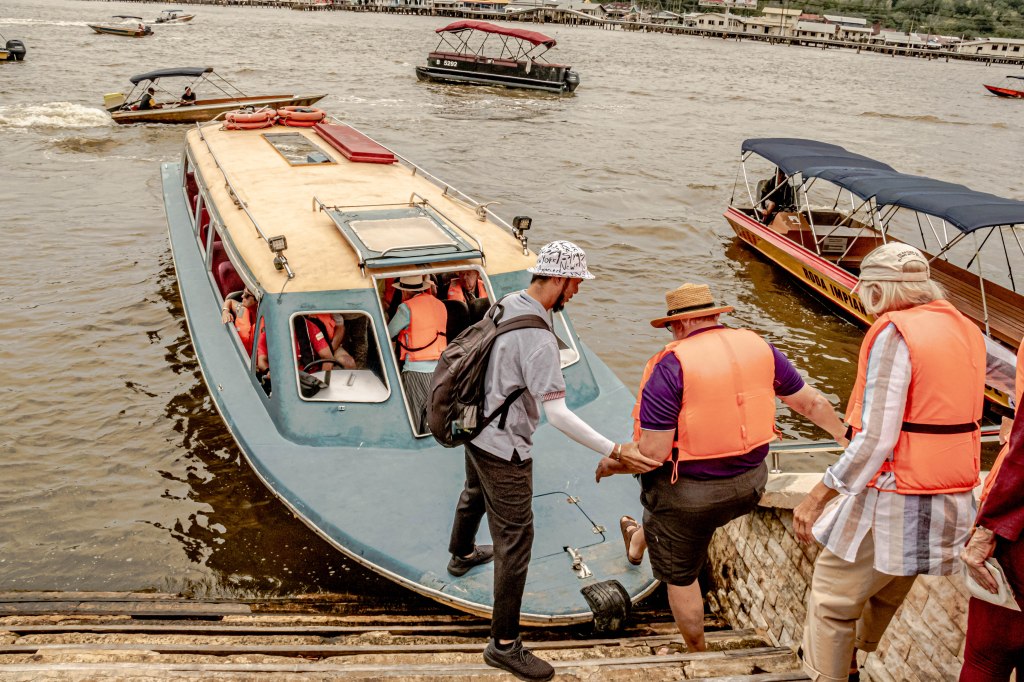

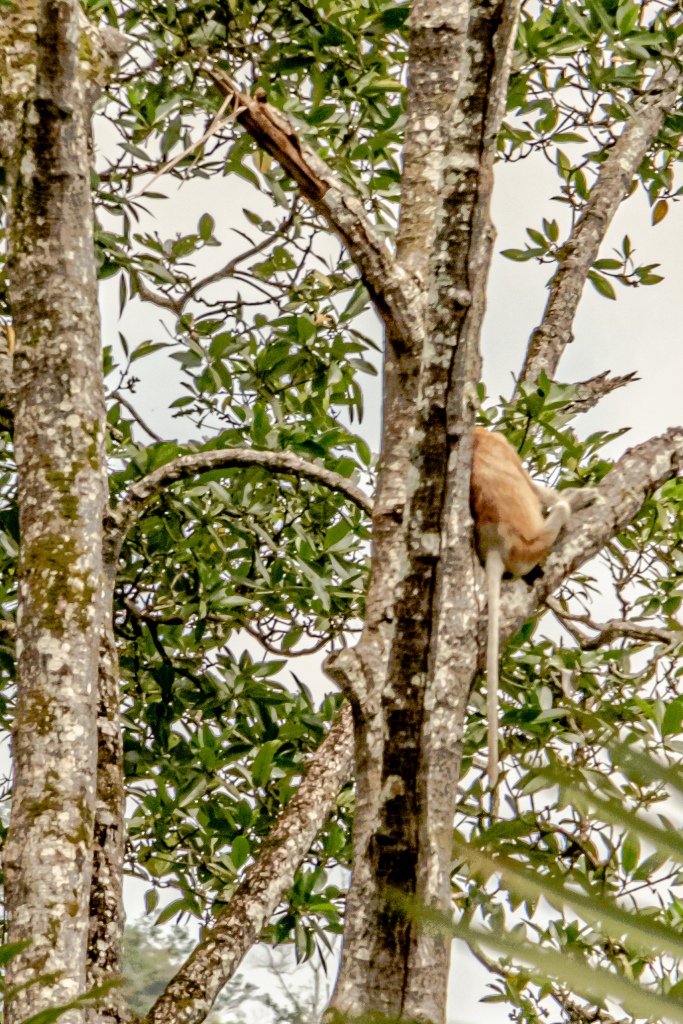



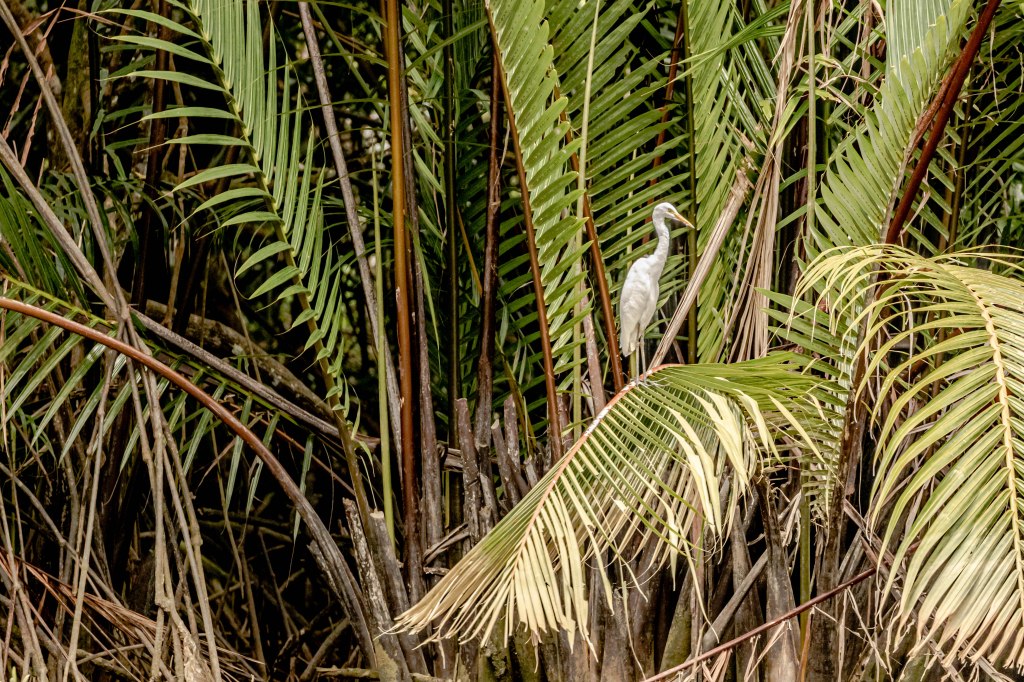


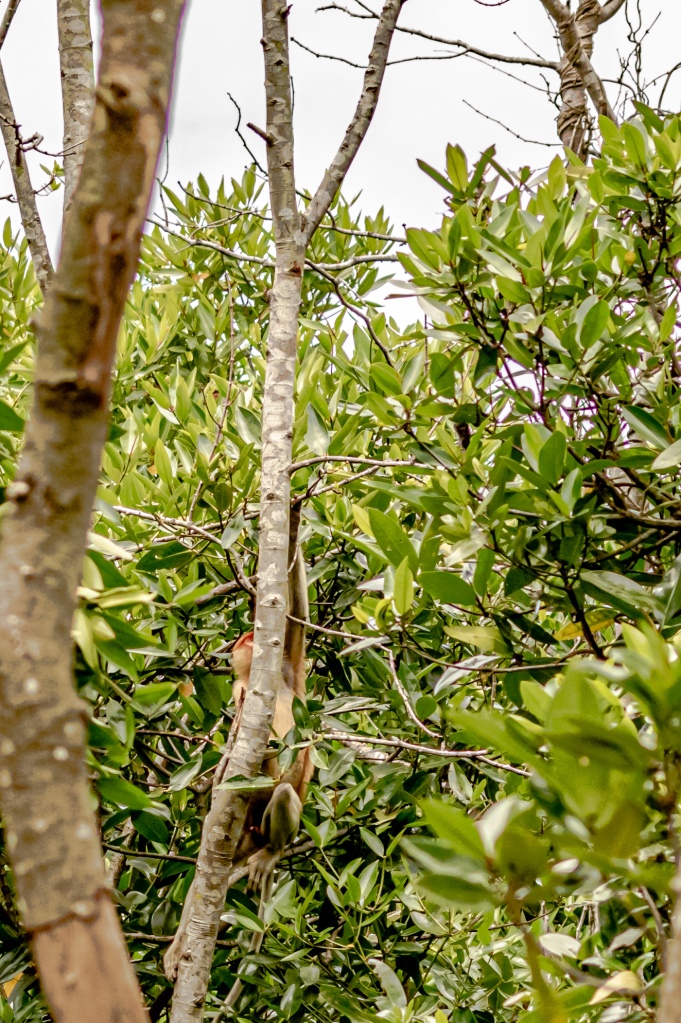



We then motored back downriver to visit the water village of Kampong Ayer, which is reputed to be the largest “water village” in southeast Asia, with over 39,000 people living in homes built on pilings over the water. A 1911 census showed that then, over half of Brunei’s population lived in the water village. Even the sultans formerly lived in this water village, albeit in much more luxurious dwellings than most of their subjects.
A huge attraction for us was the cultural exchange with the people living in the home we visited. None of the houses look very grand from the outside, but the interiors are lavishly furnished, and nearly everyone we met was all dressed up for our visit. We learned that 29 people live in the huge home we visited, which had several wings arranged around common living and cooking spaces. One of the highlights of the visit was that the women of the family had made numerous traditional Bruneian dishes for us to try, including both savory and sweet snacks. Jim and I like the curry puffs and the little packets (our hosts called them UFOs) of meat and rice with Malaysian spices. There was also a fried banana pastry, which was yummy.
















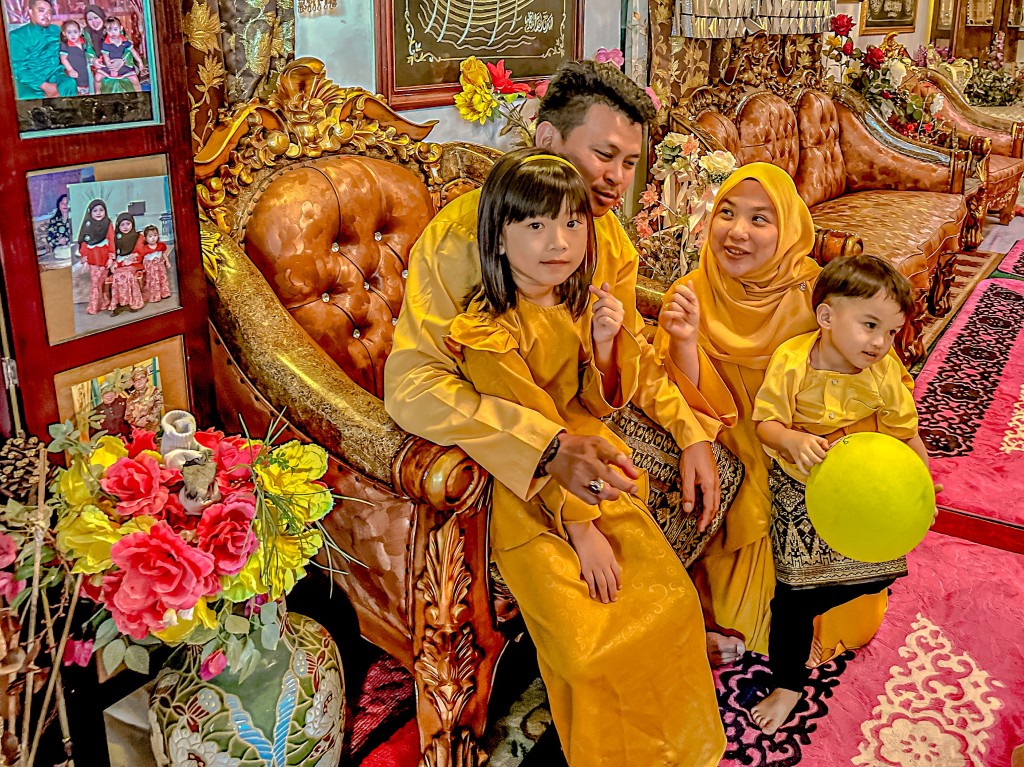

After our visit, we returned to the ship. However, I was looking for a charm, so I wanted to return to the commercial area in the capital. However, because nearly every family has multiple cars, there really are no taxis here. A technology start-up called Dart is experimenting with an “Uber-type” ride hailing app, so I decided to give it a try, along with three of our fellow passengers. However, instead of being able to hail it, from the port, you just hire the car and driver for two hours and he takes you where you want to go. In our case, we wanted to get a better look at the two monster huge mosques in the capital, and also to see a mall where I might find a charm.
The first mosque we went to was built in honor of the former sultan (#28), in 1958, and is called the Jalan Masjid Omar Ali Saifudden. It is immense, and sits in the middle of the capital, very near the waterfront. It is easily seen from all over the downtown area, with its gold dome. It has a water feature around one side of it, with a stylized boat. It can accommodate 3,000 worshippers.

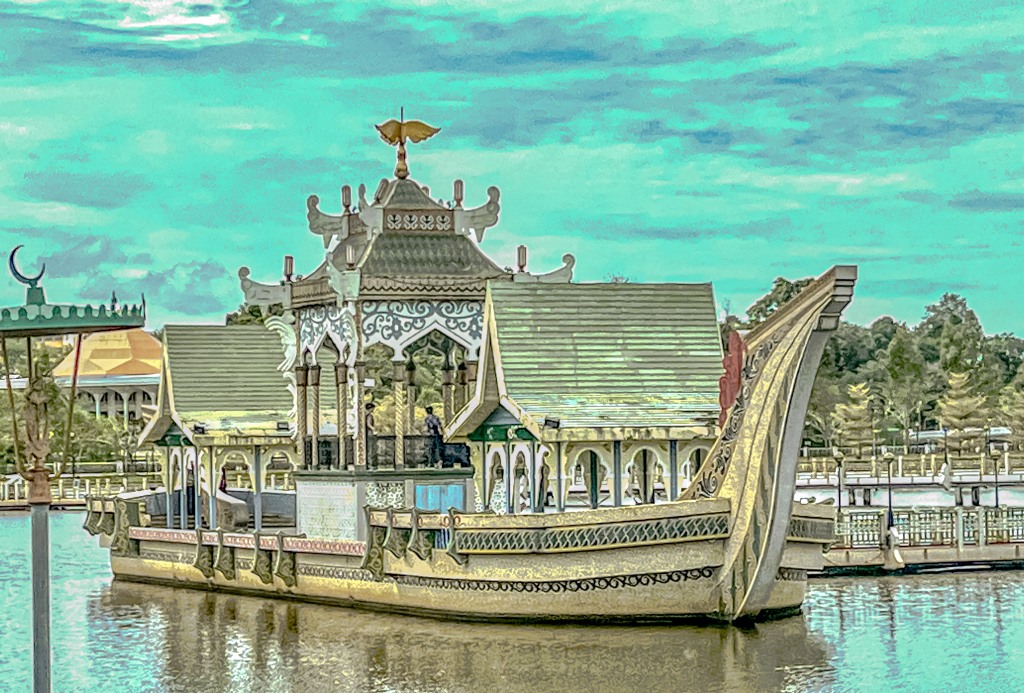



Then we visited to even bigger mosque built by the current Sultan, the Jame’Asr Hassanal Bolkiah, which is even grander. It is about three kilometers out of town in a very nice leafy suburb, but it would also be hard to miss, with its two golden domes, and six minarets topped with gold roofs. And yes, it is real gold leaf. This mosque was built in the 1990s to celebrate the current sultan’s silver jubilee. Most of the exterior is covered with mosaics. Just the stations to store your shoes when you enter are huge, and there are several of them all around the mosque. Clearly it was worth a stop to see these two monoliths.
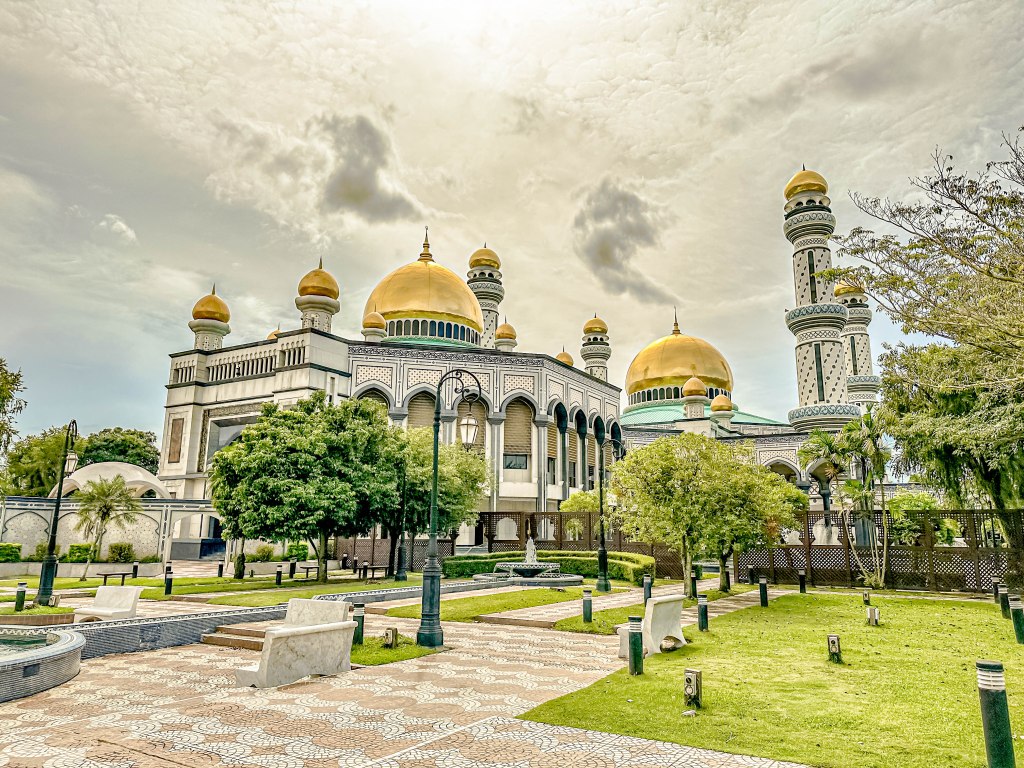
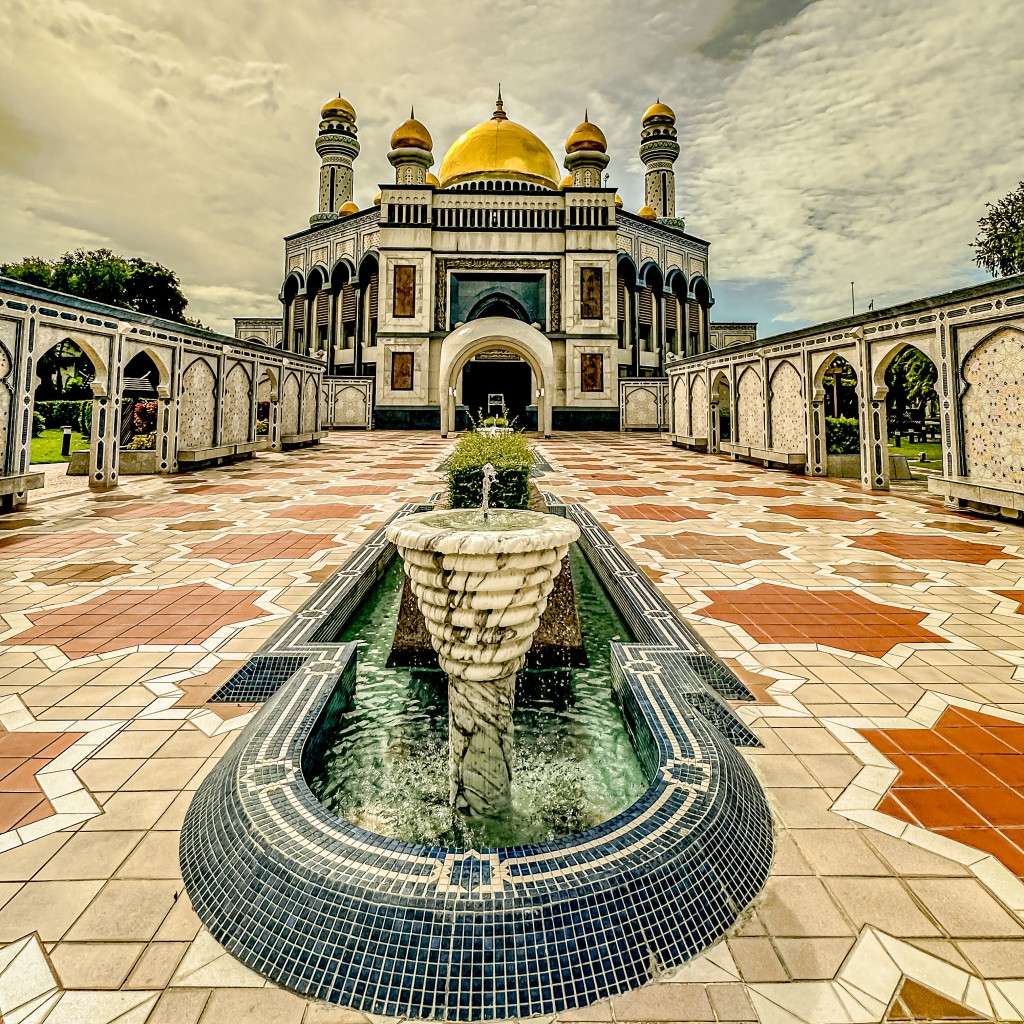
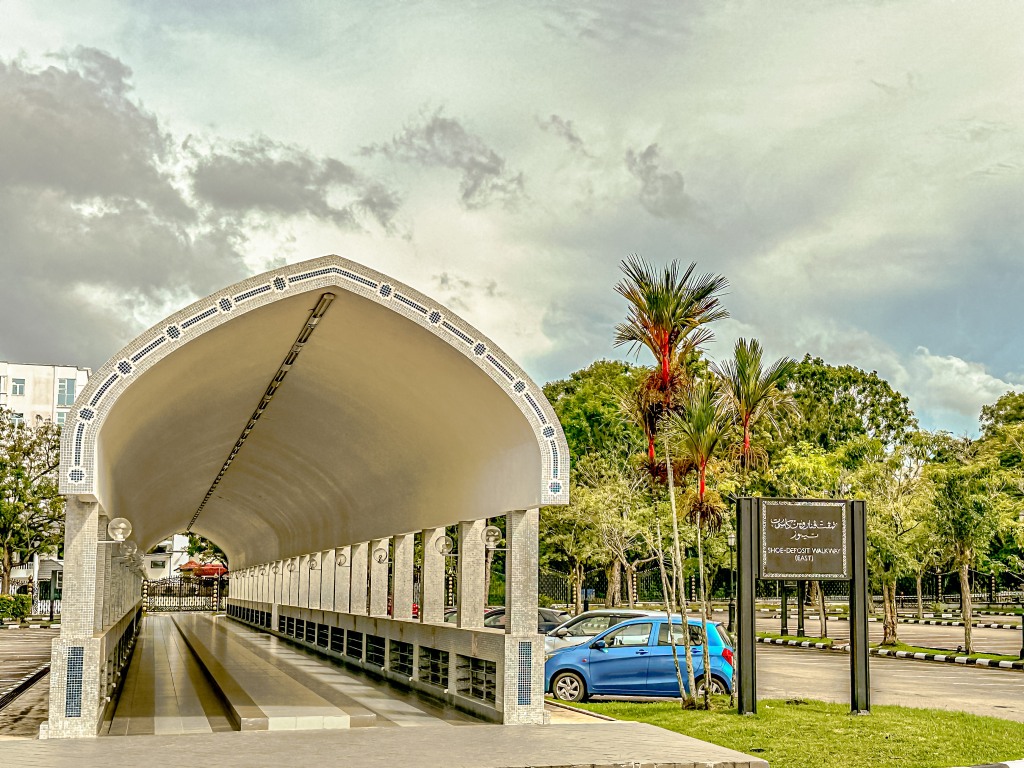
The Sultan’s Palace, which I didn’t see is also unbelievably opulent. We could see glimpses of it from the river, but a friend gave me this picture. The Royal Palace cost $400 million, and covers 460 square acres, with 1700 bedrooms. The dining room seats 5,000, and has storage for the Sultan’s immense fleet of vehicles. He has 450 Ferraris, and a gold-plated Rolls Royce. There are also over 600 “ordinary” Rolls Royces in his garage.



The mall our driver took us to weirdly would not accept credit cards, so I had to confine my shopping to the purchase of some refrigerator magnets. There were tons of jewelry store in the mall, but they only stocked gold jewelry, so that was a nonstarter for my charm hunt. However, we all felt that the extra trip had been worth it and we returned to the port. Stay tuned, for tomorrow we dock in the Malaysian port of Kota Kinabalu.

